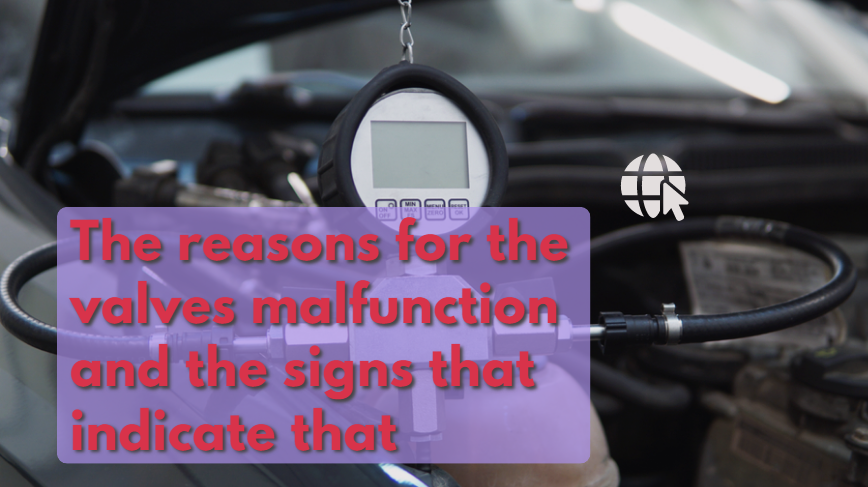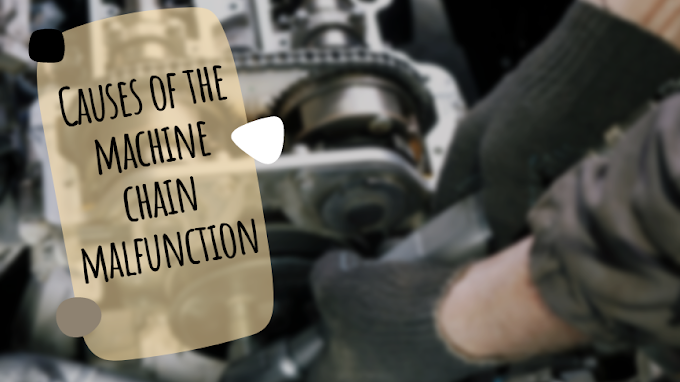The reasons for the valves malfunction and the signs that indicate that
The function of the valves in car engines is to control the closure and opening of the air intake and exit valves.
They are thus responsible for providing the engine with the air needed for the fuel burning process, in addition to eliminating the air exhausts resulting from combustion.
Engines usually contain four valves; Two of them are for air intake, and the others are for exhaust, and the valves control them precisely because they affect the fuel supply process of the engine as well. Therefore, the valves malfunction cause an imbalance in the process of producing the energy needed to move the vehicle.
 |
| The reasons for the valves malfunction and the signs that indicate that |
main valve parts
The valves mainly consist of the following parts, which are usually the cause of problems in the valves:
1. Camshaft
It is a long shaft that passes through the engine head, and it contains oval holes that differ in their position from each other, and the amount of air entering and leaving depends on their dimensions, and the greater their diameter, the greater the amount of air.
2. Camshaft follower/ Lifter
It is a type of bearing that is placed around the camshaft holes, to help it turn and move smoothly.
3. Push Rods
They are the rods responsible for raising the vibrating arms, and their movement depends on the vibrators, in addition to being responsible for supplying oil to the head of the combustion cylinders.
4. Rocker
They are movable levers responsible for driving the valve plug driven by the push rods or rollers depending on the type of engine.
5. Vibration bars
These are rods on which the vibrating arms are placed, and they are responsible for delivering the lubricated oil to them.
6. Fuse
The valves consist of the valve head that allows air to enter and exit the engine cylinders, as well as valve seals that hold the valve in place during its movement.
7. Valve springs
Valve springs return the camshaft and vibrating levers into place after they have moved in an upward motion, while also keeping the valve closed so the camshaft holes rotate more.
8. Timing Belt
The temporary belt moves the camshaft properly, and it consists of gears that contribute to fixing it to the valves in its inner face.
9. Belt corset
It is a type of spring that works to tighten the belt by the appropriate amount to protect it from slackening.
Causes of valve failure
Damage to the following parts causes the valves to malfunction:
1. The distance that the valves move over is increased
The valves close and open for a specific distance and quickly while the engine is running every two cycles, and are controlled by the internal parts of the valves that wear out over time, which leads to an increase in the distance they move within and causes abnormal sounds from the valves, and these problems can be solved by fixing the following things :
- Adjusting the position of the rocker arms in the valves.
- Change the flat shims in the valves and put new ones.
- Cleaning the valve lifters when dirt and grease collect around them, especially in engines that contain pushrods.
2. Damage of hydraulic bearings
The wear of and damage to the valves causes a crackling sound from the valves, and it can be confirmed that the problem of the valves in the valves is when other parts are intact, such as vibrating arms, pressure rods or springs, with an amount of non-contaminated oils suitable for the need of the car, and this problem can be solved by applying one of the solutions next:
- Adding cleaning agents dedicated to dissolving grease with engine oil to ensure the removal of materials accumulated in the cavities.
- Changing the old rentals and installing new ones, and you can confirm that there is a problem with them by following the following steps:
- Remove the valve cover.
- Ensure that the gearshift position is switched to alignment or pause (N).
- Run the engine on standby without moving the vehicle.
- Put a rubber hose on the valve and listen for the sounds emanating from it, as noticeable sounds will indicate that the valves are malfunctioning.
3. Vibrating arm wear
The wear of the vibrator arm due to the lack of lubricants causes knocking sounds from the engine without affecting its functions, and this problem can be solved in one of the following ways:
- Re-lubrication of the vibrator arm parts.
- Change the oil filter and engine oil if it is contaminated.
- Change the valve springs.
Signs of valve failure
The following problems appear in the car when the valves malfunction:
1. Blue smoke comes out of the exhaust valve
This problem occurs when oil leaks into the combustion chamber due to worn valve valves.
2. No complete combustion of the fuel in the case of pause mode
The valve face and valve seat are damaged by too much heat in the combustion chamber because the exhaust recirculation (EGR) valve is clogged with carbon residues.
3. External exhaust valve (Engine Backfire)
Damaged valve springs and problems with the engine's cylinder head cause the valve to be unable to fully close to the combustion chamber, resulting in these flames being released when the engine is running.
4. Engine rattling sound
This sound indicates problems with the spells or their incorrect location.
5. A loud crackling sound is emitted from the engine
This sound indicates wear and tear of the rocker arm in the valves.






